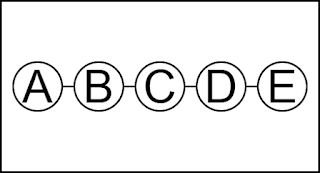
(Quiz week 13, nov 24th ) Consider the eletric network described bellow: Then, bellow we have the correspondent network, showing the capacity of energy transportation and how de the network is directed from tower to tower. Suppose we have a demand to transport energy from Tower 1 to Tower 4, in order to maintain a city. Given the demand problem, assess the statements below: The figure below show a valid flow for the network: Considering the flow showed at I, then II shows the correspondent residual graph: . $f(u,v) = f(v,u)$ for all $u$, $v$ $\in$ $V$ Given the statements, which of them are true : I and II. I and III. II and III. I, II and III. None of the above. ção.


.png)